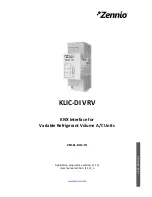
WAGO I/O SYSTEM 750 XTR
Mounting 87
750-8202/040-001 PFC200 2ETH RS TELE XTR
Manual
Version 1.2.0, valid from FW Version 03.01.07(13)
5.5
Mounting Sequence
Fieldbus couplers, controllers and I/O modules of the WAGO I/O SYSTEM 750
are snapped directly on a carrier rail in accordance with the European standard
EN 60175 (DIN 35).
The reliable positioning and connection is made using a tongue and groove
system. Due to the automatic locking, the individual devices are securely seated
on the rail after installation.
Starting with the fieldbus coupler or controller, the I/O modules are mounted
adjacent to each other according to the project design. Errors in the design of the
node in terms of the potential groups (connection via the power contacts) are
recognized, as the I/O modules with power contacts (blade contacts) cannot be
linked to I/O modules with fewer power contacts.
Risk of injury due to sharp-edged blade contacts!
The blade contacts are sharp-edged. Handle the I/O module carefully to prevent
injury. Do not touch the blade contacts.
Insert I/O modules only from the proper direction!
All I/O modules feature grooves for power jumper contacts on the right side. For
some I/O modules, the grooves are closed on the top. Therefore, I/O modules
featuring a power jumper contact on the left side cannot be snapped from the
top. This mechanical coding helps to avoid configuration errors, which may
destroy the I/O modules. Therefore, insert I/O modules only from the right and
from the top.
Don't forget the bus end module!
Always plug a bus end module 750-600/040-000 onto the end of the fieldbus
node! You must always use this bus end module at all fieldbus nodes with the
WAGO I/O SYSTEM 750 XTR fieldbus couplers/controllers to guarantee proper
data transfer.
Increased interference!
For standard-compliant application in substation instrumentation and control,
telecontrol systems, railway technology or shipbuilding certified operation,
field-side power supply filter 750-624/040-001 or power supply filter
750-626/040-000 are generally to be used for XTR module groups.
















































